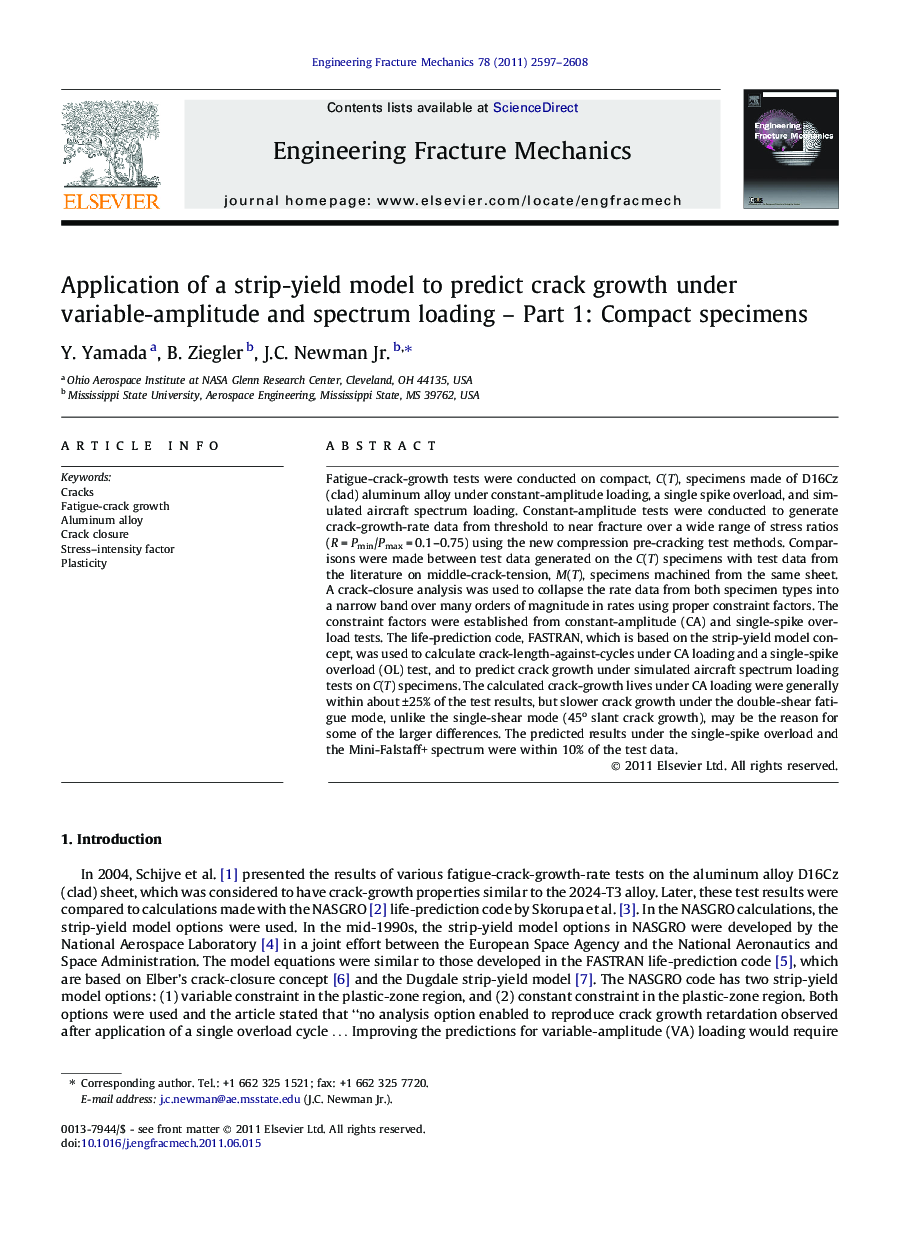| کد مقاله | کد نشریه | سال انتشار | مقاله انگلیسی | نسخه تمام متن |
|---|---|---|---|---|
| 775373 | 898315 | 2011 | 12 صفحه PDF | دانلود رایگان |

Fatigue-crack-growth tests were conducted on compact, C(T), specimens made of D16Cz (clad) aluminum alloy under constant-amplitude loading, a single spike overload, and simulated aircraft spectrum loading. Constant-amplitude tests were conducted to generate crack-growth-rate data from threshold to near fracture over a wide range of stress ratios (R = Pmin/Pmax = 0.1–0.75) using the new compression pre-cracking test methods. Comparisons were made between test data generated on the C(T) specimens with test data from the literature on middle-crack-tension, M(T), specimens machined from the same sheet. A crack-closure analysis was used to collapse the rate data from both specimen types into a narrow band over many orders of magnitude in rates using proper constraint factors. The constraint factors were established from constant-amplitude (CA) and single-spike overload tests. The life-prediction code, FASTRAN, which is based on the strip-yield model concept, was used to calculate crack-length-against-cycles under CA loading and a single-spike overload (OL) test, and to predict crack growth under simulated aircraft spectrum loading tests on C(T) specimens. The calculated crack-growth lives under CA loading were generally within about ±25% of the test results, but slower crack growth under the double-shear fatigue mode, unlike the single-shear mode (45o slant crack growth), may be the reason for some of the larger differences. The predicted results under the single-spike overload and the Mini-Falstaff+ spectrum were within 10% of the test data.
► Tested D16Cz aluminum alloy to determine fatigue-crack-growth rate behavior.
► Tested compact C(T) specimens over a wide range in stress ratios (0.1–0.75).
► Compare C(T) data with middle-crack-tension M(T) data from literature.
► Used a crack-closure model to correlate and to predict crack-growth under spectrum loading.
► Model preformed very well on the C(T) specimens for all loading conditions.
Journal: Engineering Fracture Mechanics - Volume 78, Issue 14, September 2011, Pages 2597–2608